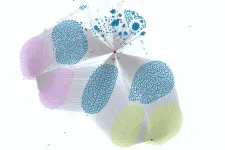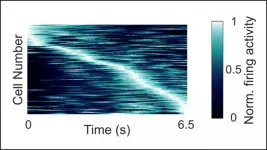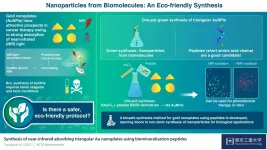(Press-News.org) ATLANTA - JUNE 28, 2021 - A new study finds evidence for adverse effects of the COVID-19 pandemic on declines in cancer detection and surgical treatments. The study, appearing in JNCI: The Journal of the National Cancer Institute, finds a 10.2% decline in real-time electronic pathology reports from population-based cancer registries in 2020 compared with those in 2019.
This study observation period, through December 2020, is one of the longest to date for evaluating the effects of the COVID-19 pandemic on cancer-related trends. To learn more about the indirect effects of the pandemic on cancer care, investigators led by Robin Yabroff, PhD, MBA of the American Cancer Society used electronic pathology data from population-based SEER cancer registries from Georgia and Louisiana that included information about cancers from all age groups. Trends for breast, colorectal, lung, and prostate cancers, the most common cancers, were assessed separately, as were trends by age group.
The study found initial patterns of declines were generally like those reported elsewhere, with greatest differences in April 2020 relative to April 2019, the first peak in COVID-19 mortality rates in Georgia and Louisiana. Declines in pathology reports in August, November, and December coincided with later peaks in COVID-19 mortality rates.
"We observed substantial declines in 2020 among cancers with effective screening tests, including breast and colorectal cancers, as well as across cancer sites and age groups without effective screening tests, including cancers among children and young adults," said Dr. Yabroff. "Declines across cancer sites and age groups suggest that in addition to delays in cancer screening, there were also delays in routine well-child and primary care, evaluation of signs and symptoms, and treatment initiation for most cancers."
Notably, the number of pathology reports in 2020 never consistently exceed those in 2019 after initial declines, which might be expected if a backlog of diagnoses were being resolved. By cancer type, percentage declines were greatest for lung (17.4%) and colorectal (12.0%) cancers, followed by breast (9.0%) and prostate (5.8%) cancers. Declines were observed in all age groups, including children and adolescents younger than 18 years. Patterns of declines were similar by cancer site and age group, with some variation in timing, magnitude, and duration of declines.
"The findings suggest substantial delays in diagnosis and treatment services for cancers during the pandemic, and that ongoing evaluation can inform public health efforts to minimize any lasting adverse effects of the pandemic on cancer diagnosis, stage, treatment, and survival," write the authors. "As data become available, evaluation of the effects of the pandemic on cancer stage at diagnosis and survival will be important, as will evaluation of racial/ethnic, socioeconomic, and geographic disparities in access to care and outcomes."
INFORMATION:
Article: Yabroff KR, Wu XC, Negoita S, Stevens J, Coyle L, Zhao J, Mumphrey B, Jemal A, Ward K. Association of the COVID-19 Pandemic with Patterns of Statewide Cancer Services. JNCI: Journal of the National Cancer Institute, 2021. doi: 10.1093/jnci/djab122.
URL: https://doi.org/10.1093/jnci/djab122
Up to 7 million people each year receive care in an emergency department (ED) for chest pain, a symptom of a potential heart condition. Over 80 percent of chest pain patients, however, ultimately have no evidence of cardiovascular disease or acute coronary syndrome. To disincentivize patients from over-utilizing costly care, insurers and employers are increasingly opting for high-deductible health plans (HDHPs) that require significant out-of-pocket spending before coverage begins. Researchers from Brigham and Women's Hospital and Harvard Pilgrim Health Care Institute investigated whether ...
The internet is full of dangers: Sensitive data can be leaked, malicious websites can allow hackers to access private computers. The Security & Privacy Research Unit at TU Wien in collaboration with Ca' Foscari University has now uncovered a new important security vulnerability that has been overlooked so far. Large websites often have many subdomains - for example, "sub.example.com" could be a subdomain of the website "example.com". With certain tricks, it is possible to take control of such subdomains. And if that happens, new security holes open up that also ...
The exoplanet satellite hunter CHEOPS of the European Space Agency (ESA), in which the Instituto de Astrofísica de Canarias (IAC) is participating along with other European institutions, has unexpectedly detected a third planet passing in front of its star while it was exploring two previously known planets around the same star. This transit, according to researchers, will reveal exciting details about a strange planet "without a known equivalent".
The discovery is one of the first results of CHEOPS (CHaracterising ExOPlanet Satellite) and the first time that an exoplanet has been seen with a period longer than 100 days transiting a star which is sufficiently ...
Scientists of Tomsk Polytechnic University were able to obtain polytetrafluoroethylene (PTFE) membranes using electrospinning. PTFE is known to be the most stable existent polymer. According to the scientists, it is a simple, affordable and easily scalable method, which will allow obtaining chemically stable membranes in industrial-scale production. The membranes can be used in petrochemical, aerospace, nuclear industries, carbon-free energy and medicine.
The latest results of the research of physical and chemical properties and biocompatibility of the obtained membranes are published ...
The U.S. Food and Drug Administration's controversial decision to approve aducanumab for the treatment of Alzheimer's disease raises at least three major ethical issues that need to be addressed, states a new article in the Hastings Center Report:
Billions of dollars in Medicare resources (which is to say, taxpayer dollars) are at risk of being unjustly squandered.
Physicians must choose between facilitating this unjust squandering and denying desperate patients and families access to this drug.
Patients and families are having false hopes legitimated and encouraged when physicians prescribe aducanumab.
The drug's approval was contrary to the nearly unanimous judgment of an FDA advisory committee that there was little reliable evidence of significant ...
HOUSTON - (June 28, 2021) - Rice University computer scientists are sending RAMBO to rescue genomic researchers who sometimes wait days or weeks for search results from enormous DNA databases.
DNA sequencing is so popular, genomic datasets are doubling in size every two years, and the tools to search the data haven't kept pace. Researchers who compare DNA across genomes or study the evolution of organisms like the virus that causes COVID-19 often wait weeks for software to index large, "metagenomic" databases, which get bigger every month and are now measured in petabytes.
RAMBO, which is short for "repeated and merged bloom filter," is a new method that can cut indexing times for such ...
Neurons in the hippocampus fire during specific moments in time, according to research recently published in JNeurosci. The cells may contribute to memory by encoding information about the time and order of events.
Episodic memories involve remembering the "what, where, and when" of past experiences. The "where" may be encoded by place cells in the hippocampus, which fire in response to specific locations. Rodents have hippocampal neurons that fire in response to specific moments in time -- the "when" -- but until recently it was not known if the human brain contained them too.
Reddy et al. recorded the electrical activity of neurons in the hippocampus of epilepsy patients undergoing diagnostic invasive monitoring ...
In cancer therapy, the effectiveness of an approach is determined by its ability to preserve the non-cancerous cells. Simply put, the higher the collateral damage, the greater are the side-effects of a therapy. An ideal situation is where only the cancer cells can be targeted and destroyed. In this regard, photothermal therapy--an approach in which cancer cells infused with gold nanoparticles can be heated up and destroyed using near-infrared (NIR) light that is strongly absorbed by the gold nanoparticles--has emerged as a promising strategy due to its minimally invasive nature.
"Because NIR light is able to penetrate biological tissues, it can illuminate ...
The Structural Bioinformatics and Network Biology laboratory, led by ICREA Researcher Dr. Patrick Aloy, has completed the bioactivity information for a million molecules using deep machine-learning computational models. It has also disclosed a tool to predict the biological activity of any molecule, even when no experimental data are available.
This new methodology is based on the Chemical Checker, the largest database of bioactivity profiles for pseudo pharmaceuticals to date, developed by the same laboratory and published in 2020. The Chemical Checker collects information from 25 spaces of bioactivity for each molecule. These spaces are linked to the chemical structure of the molecule, the targets with which it interacts or the changes ...
For the first time, scientists from the German Cancer Consortium (DKTK) partner site in Essen/Düsseldorf have discovered stem cells of the hematopoietic system in glioblastomas, the most aggressive form of brain tumor. These hematopoietic stem cells promote division of the cancer cells and at the same time suppress the immune response against the tumor. This surprising discovery might open up new possibilities for developing more effective immunotherapies against these malignant brain tumors.
The DKTK is a consortium centered around the German Cancer Research Center (DKFZ) in Heidelberg, which has long-term collaborative partnerships with specialist oncological centers at universities across Germany.
Glioblastomas ...




